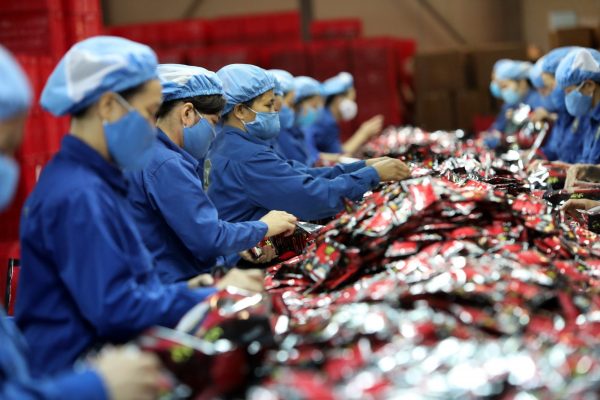There was a record overall trade surplus of US$19.1 billion in 2020. The United States and China are the two largest export markets, by 24.5 per cent and 17.1 per cent respectively over this period, with total trade of US$76.4 billion and USD 48.5 billion. Vietnam’s exports to the United States are soaring, with a trade surplus of US$62.7 billion — compared to US$10.5 billion in 2010 — whereas Vietnam still has a trade deficit with China at US$35.4 billion.
There have been shifts in trade between the United States, China and Vietnam driven by the US–China trade war and the pandemic. Vietnam has benefitted from the trade war, at least in the short term, but the data is causing the United States to question whether Vietnam is actively serving as a trans-shipment place for Chinese exporters trying to skirt trade war-related barriers. In the effort to avoid American tariffs, Vietnam needs to increase surveillance over Chinese goods destined for the United States that are passing through Vietnam, particularly those with ‘Made in Vietnam’ labelling.
On 29 May 2019, Vietnam was placed on the America’s currency manipulator watchlist for the first time. And on 16 December 2020, the US administration officially labelled Vietnam a currency manipulator. Currency manipulation refers to the intentional over-purchasing of foreign currency, holding down the value of the domestic currency to obtain an unfair edge in trade.
This controversial US accusation has only symbolic significance and does not automatically trigger retaliation. Retaliation or removing the ‘currency manipulator’ label will be a decision for the next US administration. The International Monetary Fund (IMF) has suggested the label can challenge a country’s independent monetary policy and lead to escalating trade tensions.
The Trump administration’s move was not surprising, given its sensitivity to trade balances and its ever increasing protectionism. US trade law allows countervailing duties (CVDs) to be imposed on trading partners that subsidise exports.
On 4 November 2020, the US Department of Commerce reported that Vietnam’s currency practices could be subsidising tyre exports by 6.2 to 10 per cent. The US Treasury alleges Vietnam undervalued its currency by 4.7 per cent against the US dollar in 2019. But with record-low interest rates, it may also be that the United States had lowered the value of its own currency.
To impose CVDs, the US International Trade Commission needs to provide evidence that US businesses suffered ‘material injury’. However, Section 301 of the US Trade Act allows the US to retaliate against countries that engage in ‘unfair’ trade practices. On 10 October 2020, the US Trade Representative initiated an investigation into Vietnam’s currency practices after the value of the Dong, Vietnam’s currency, fell following a US$22 billion foreign exchange purchase in 2019.
From June 2019 to June 2020, net purchases of foreign exchange were US$16.8 billion, equivalent to 5.1 per cent GDP, arousing suspicion of currency manipulation. Vietnam has accrued considerable reserves, but current reserves equivalent to 25 per cent GDP are still lower than that of other economies in the region, including Malaysia and Thailand.
The designation of currency manipulation then is ostensibly driven by the bilateral surplus rather than currency intervention. Yet Vietnam’s trade surplus results more from a shift of export production than from any monetary policy change at the State Bank of Vietnam (SBV).
The central bank responded immediately after Vietnam was labelled a currency manipulator. Its exchange rate management in recent years has only aimed to control inflation and stabilise the macro-economy. Its mandate is not to create a competitive advantage in international trade. Vietnam has shown itself willing to work with US authorities to ensure harmonious and fair trade. That the United States labelled Vietnam a currency manipulator is a diplomatic blunder and reflects broader problems with use of the currency manipulation concept.
‘To know oneself is true progress’ goes an old expression in Vietnam. The country needs to maintain a strong stance in conducting monetary policy and maintain strict oversight on import–export activities. If there are any real signs of trans-shipment, dumping, subsidies, or active currency devaluation taking place, retaliatory anti-trade policies then retaliation from major economic partners will follow. Vietnam needs to improve production capacity, create more added value in exports and enhance its economic autonomy in an effort to avoid excessive dependence on simply moving goods from one port to the next.
Nguyen Khac Quoc Bao is Associate Professor of Finance at the University of Economics Ho Chi Minh City (UEH).
To Cong Nguyen Bao is a Lecturer in Finance at the University of Economics Ho Chi Minh City.

